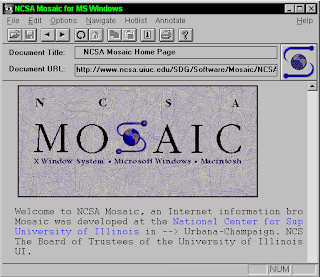Even in the wildest dreams of science fiction and fantasy writers, few envisioned anything
that offers the level of potential that the Internet now provides for sharing information on
aworldwide basis. For both businesses and individuals, the Internet is now the medium of
choice, largely because it enables you to present your wares to the entire world on a 24/7
basis. But the technology’s origins were more ominous than and very different from the
ever-growing, sprawling free-for-all that exists today.
In the 1960s, the American military was experimenting with methods by which the US
authorities might be able to communicate in the aftermath of a nuclear attack. The sug-gested solution was to replace point-to-point communication networks with one that was
more akin to a net. This meant information could find its way from place to place even if
certain sections of the network were destroyed. Despite the project eventually being
shelved by the Pentagon, the concept itself lived on, eventually influencing a network that
connected several American universities.
During the following decade, this fledgling network went international and began opening
itself up to the general public. The term Internet was coined in the 1980s, which also her-alded the invention of Transmission Control Protocol/Internet Protocol (TCP/IP), the net-working software that makes possible communication between computers running on
different systems. During the 1980s, Tim Berners-Lee was also busy working on HTML, his
effort to weld hypertext to a markup language in an attempt to make communication of
research between himself and his colleagues simpler.
Despite the technology’s healthy level of expansion, the general public remained largely
unaware of the Internet until well into the 1990s. By this time, HTML had evolved from a
fairly loose set of rules—browsers having to make assumptions regarding coder intent and
rendering output—to a somewhat stricter set of specifications and recommendations.
This, along with a combination of inexpensive hardware, the advent of highly usable web
browserssuch as Mosaic(see the following image), and improved communications tech-nology, saw an explosion of growth that continues to this day.
Initially, only the largest brands dipped their toes into these new waters, but soon thou-sands of companies were on the Web, enabling customers all over the globe to access
information, and later to shop online. Home users soon got in on the act, once it became
clear that the basics of web design weren’t rocket science, and that, in a sense,everyone could do it—all you needed was a text editor, an FTP client, and some web space.
 |
| Mosaic the First Web Browser |
Designers soon got in on the act, increasingly catered for by new elements within HTML;
Cascading Style Sheets (CSS), which took a while to be adopted by browsers, but eventu-ally provided a means of creating highly advanced layouts for the Web; and faster web
connections, which made media-rich sites accessible to the general public without forcing
them to wait ages for content to download.
Therefore, unlike most media, the Web is truly a tool for everyone, and in many countries,
the Internet has become ubiquitous. For those working in a related industry, it’s hard to
conceive that as recently as the mid-1990s relatively few people were even aware of the
Internet’s existence!
So, from obscure roots as a concept for military communications, the Internet has evolved
into an essential tool for millions of people, enabling them to communicate with each
other, research and gather information, telecommute, shop, play games, and become
involved in countless other activities on a worldwide basis.

No comments:
Post a Comment
I know how time is important to you, But your comment will help us to develop this site....